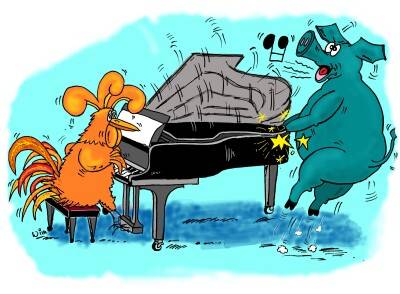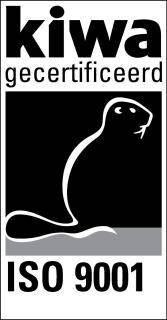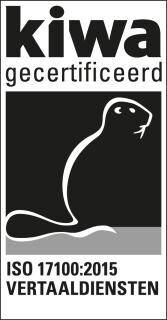
Communication in the agri-food sector
The agri-food sector has arguably experienced more change than any other sector during recent decades. Across the globe, but especially in western countries, agriculture, fruit growing, animal husbandry and food production can no longer be compared to the small-scale farms and nurseries of the previous century.
Less is more
Surveys by various institutes confirm a widespread trend: fewer farms, but higher productivity and margins. For example, in 1975 there were more than 900,00 farms in Germany; in 2021 this had declined to just 256,900. However, profitability and yields have seen enormous growth since the 1970s. The farms that have ceased operating are mainly small scale enterprises, while the number of larger farms with more than 200 hectares of land has increased. In 2021, the Netherlands set a new record in agricultural exports for the sixth year in a row. An output achieved by a sharply decreasing number of actual producers. At the turn of the millennium, the Netherlands numbered just shy of 100,000 farms and nurseries; 21 years later this figure was down to just 52,000.
The globalised market has driven a steady increase in competitive pressure, leading to agricultural companies competing in terms of efficiency. The agricultural and horticultural sectors have been revolutionised in recent years with intensification, mechanisation and specialisation helping to increase productivity. Since the end of the 19th century, yields have increased exponentially due to the use of manufactured products such as fertiliser, feed and machinery, and by implementing intensive methods. This development is linked to a decline in self-sufficiency, and a growing global demand for food commodities such as eggs, milk and meat. As a result, agriculture has become capital intensive and highly specialised.
This transformation has triggered enormous changes in agricultural communication and effectively resulted in two, parallel languages in the sector. One is the typical agricultural jargon used by experts and agricultural workers. For non-professionals, this is difficult to decipher, and doesn't always even mean the same thing to all farmers. The other is colloquial language that everyone can understand, even without inside knowledge.
Jargon
Today's agricultural professionals need to be knowledgeable about every aspect of a multifaceted sector. On a technological level this extends to aspects such as the latest GPS-based applications used in precision farming, combine harvesters, sow feeding stations or milking robots and includes their operation, maintenance and cleaning. And the increased use of industrially produced inputs, animal feed and nutrients, as well as innovations in livestock farming and the seed breeding sector all demand specific knowledge. European agricultural policy, and the subsidies and requirements it entails, is also a specialist area in which a farmer must be particularly well versed.
Jargon, which is used for different purposes and contexts, is an inseparable part of this specialist knowledge. Some components of professional language are universal, and do not require knowledge of another language. An example of this is the widely used periodic table.
Jargon is a formal, short and precise description of the content, and is and is always specific to a subject or discipline. For example, butchers, lawyers, doctors and farmers all use specific jargon These are words and terms that are unfamiliar, or may have a totally different meaning, outside of the sector concerned. Terms such as PTO, lodging, disbudding and dry off are part of the active or passive occupational language of every agricultural entrepreneur. These terms aren’t so easily understood by laymen.
People working in the same, or similar professions, form part of a discourse community that understands and uses the corresponding jargon. Communicating in this way consciously or unconsciously excludes non-specialists.
Colloquial language
According to the linguist Miroslaw Bańko, the term 'colloquial language’ can be defined as ‘the linguistic style used for casual (informal) communication. It is the most common functional style of speech, the idiom normally employed in conversation and other informal contexts.’ The use of colloquial, easily understandable language by the agricultural sector is extremely important, as the relationship between producers and consumers is radically different to a few decades ago. Today, companies active in agriculture use multilingual websites to increase awareness of their brands and products. This involves balancing how jargon and colloquial language are used to create content that captures the attention of the target audience. A website full of technical terms might not be so interesting to a potential client with less detailed knowledge. They could lose interest and quickly leave your website. The same applies to printed material. When dealing with the general public, verbal and written communication mainly uses colloquial language. This is vital, as the buying behaviour of today's critical consumers is also influenced by factors such as traceability, quality, animal welfare and environmental impact. Explaining these often-complex issues in simple terms can make all the difference.
Many primary producers are increasingly implementing different strategies to provide extra income. As the profit margins in agriculture are eaten away by the rising costs of production, diversification is gaining traction as a way of generating revenues. Examples of this are agritourism and care farms. Successful positioning requires the use of colloquial language without all too much jargon!
Modern communication channels
Language and the way we speak and use language continues to change and evolve. New, multiple communication channels have also changed the way people connect. In the past, word of mouth advertisements were a key factor in increasing sales. Today, a raft of other strategies are also deployed. The content of advertising materials, such as brochures, can be tailored specifically to suit the target group or persona. This also applies to websites, where there are infinite possibilities to incorporate visual features. YouTube and TikTok are platforms where the agricultural sector can be presented in smart, detailed and attractive videos. Social networks like Facebook provide the opportunity for endless promotion of your own products. According to their own figures, Facebook claims to have 2.9 billion monthly active users. Instagram offers a similar service and has recently reached a new milestone, with more than a billion monthly active users in 2021.
It might be an obvious point to make, but communication in the agricultural sector can take on many forms depending on the purpose. An excellent command of the correct jargon and colloquial language is essential, as is the right tone of voice. Translation Agency AgroLingua is specialised in the agri and food sector, and has a wealth of experience in all disciplines.
Do you want to benefit from our expertise and strike the right chord? Then get in touch with the translation specialists at AgroLingua.
Back to blogs





